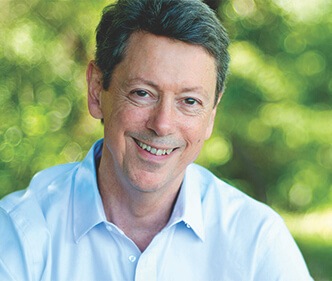ABOUT Rick

Rick Hanson, PhD, is a psychologist, senior fellow of the Greater Good Science Center at UC Berkeley, and New York Times bestselling author. His books are available in twenty-eight languages and include Resilient, Hardwiring Happiness, Just One Thing, Buddha’s Brain, and Mother Nurture.
To date, his books have sold more than 750,000 copies in English.
He edits the Wise Brain Bulletin and has numerous audio programs. A summa cum laude graduate of UCLA and founder of the Wellspring Institute for Neuroscience and Contemplative Wisdom, he has been an invited speaker at NASA, Oxford, Stanford, Harvard, and other major universities, and has taught in meditation centers worldwide. He and his wife live in San Rafael, California, and have two adult children.
Reverse-engineer your brain to experience freedom from suffering with this radically bold yet practical seven-step plan from the New York Times bestselling author of Buddha’s Brain and Hardwiring Happiness.
Building on his classic bestseller Buddha’s Brain, New York Times bestselling author and senior fellow of the Greater Good Science Center at UC Berkeley Rick Hanson uses the Buddhist analysis of the mind as a road map for strengthening the neural circuitry of deep calm, contentment, kindness, and wisdom–qualities we all need to succeed in the face of adversity.
Most books about transformations of consciousness are theoretical or religious, typically full of jargon, pep talks, and calls to believe on faith alone. This is a book, however, of practice, immediately actionable with simple, powerful guided meditations–and despite this grounded approach, its promise is radically life-changing.
Neurodharma is nothing short of a path to transcendence, a method for liberating the mind and heart, discovering freedom from suffering, and engaging life with a kind heart and inner peace. In this step-by-step path of practical ideas and tools, Dr. Hanson guides readers with his usual encouragement, good humor, and personal examples.
